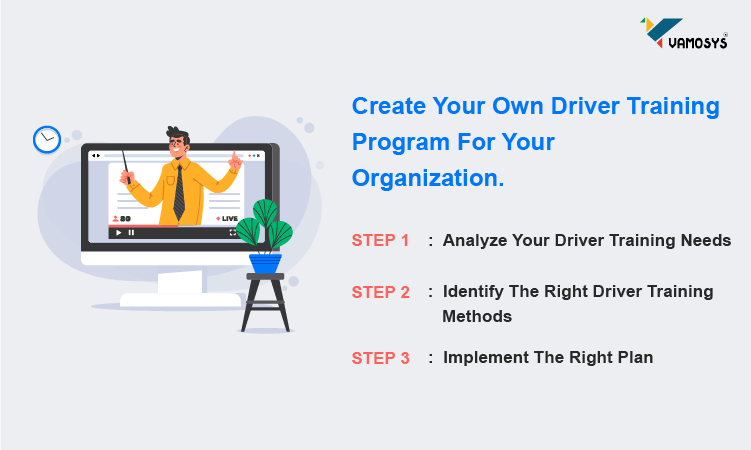How To Build A Proper Driver Training Program
Summary
A driver training program can help organizations reduce fuel consumption, improve safety, increase productivity, and create a culture of discipline among drivers. To create a driver training program, fleet managers should first analyze their driver training needs by collecting accident reports, driver information, and performance data using telematics systems. Then, they should identify the right driver training methods, such as skill development, theoretical and practical training, and vehicle-specific training. Finally, fleet managers should implement the right plan by communicating the benefits of the program to drivers and ensuring that they understand the importance of the program for both the organization and their own driving career.
We know how much the fuel cost acquires the overall fleet expenses. Drivers are considered to have 50 – 60% of response over fuel consumption. So, monitoring and managing fuel and driver becomes the vital role for fleet managers or fleet owners.
When it comes to fuel management, there are a lot of general ways and driving ways to control fuel consumption; then particularly, why do you need to conduct a driver training program in your organization?
Driver training not only helps to reduce fuel consumption, mainly it helps you bring culture and discipline within the drivers, which makes your organization move in an effective way.

What Are The Benefits That Driving Training Program Brings To Your Organization?
Educating and training your drivers, you can improve or build a strong brand name by
- Minimizing accidents
- Increasing productivity.
- Controlling fuel consumption.
- Training the drivers to tackle their problems faced on the route.
- Saving up to 30% of fuel expenses.
- Creating a culture.
- Preventing fuel thefts in organizations.
- Taking the transportation and logistics operations in a systematic way.
- Improving the safety of both drivers and vehicles.
- Improving driver’s knowledge of vehicles and the workplace.
- Increases the ability to operate telematics systems in a proper manner.
Which type of organizations can make use of this driver training program? This driver training learning program is suitable for organizations that use transportation or logistics services in their work.
How To Create Your Own Driver Training Program For Your Organization.
STEP 1: Analyze Your Driver Training Needs
The very first step to build a driver training program is to identify the needs. This step is not only suitable for building a driver program; it stays ideal for every process you like to begin.
To build a driver training program, the basic analysis should be done on various factors like driving behavior, analyze the risk factors, accident reports, the performance of the vehicle, and the usage of telematics.
How to identify the various factors that rely on drivers?
- Collect all the existing documents on accident reports.
- Get all driver’s information and attitude over vehicles.
- Collect the analysis of every driver by conducting the driver risk assessment, which covers their attitude, performance, behavioral, and capability questions.
- Also, make use of telematics systems to collect the insights and complex behavior of every driver individually.
How do VAMOSYS help you in getting DRIVER PERFORMANCE DATA?
- Using the VAMOSYS GPSVTS application, you can get the complete data on the driver performance chart monthly or daily basis.
In this GPSVTS driver performance chart, you will get to know about the analysis of break, speed, and acceleration.
Break analysis provides you about the number of times the drivers used normal breaks (counted when falling from 30km to 0km), Aggressive breaks (counted when falling from 35km to 0km), harsh breaks (counted when falling from 40km to 0km), very harsh breaks (counted when falling from 60km to 0km), and worst breaks (counted when falling from 70km or above to 0km).
Acceleration analysis says the count of normal, Aggressive, harsh, very harsh, and worst accelerations.
These data are provided with the location, date, and time For more details.
- Also, VAMOSYS provides you a platform for video telematics. Where you can get the
- Live stream of your vehicle front and cabin view for 24*7.
- You can able to record both the voice and video whenever the ignition is on and if any vibration occurs even the ignition is off.
- DashCams comes with the in-build GPS feature.
- Also, Dashcam provides you the alert notifications on
- Fatigue Alert
- No Face Detection Alert
- Distraction Alert
- Closed Eyes Alert
- Yawning Alert
- Smoking Alert
- Phone usage Alert
STEP 2: Identify The Right Driver Training Methods
The right driver training programs or methods can be derived from the complete analysis of training needs; it is also important that training methods need to address the organization’s requirements.
Normally a basic driver program consists of skill development, theoretical and practical training. But, an organization should have exclusive training for different sets of people.
What should your driver training program consist of?
- Training for Freshman.
- Training for an experienced person.
- Training based on vehicle type (either lightweight or heavyweight vehicles).
- Training to reduce fuel consumption.
- Driving techniques.
- Training for proper communication.
- Training based on climatic conditions and regions.
- Training to use Telematics system.
- Training on safety and on-road risk reduction.
- Training on transporting Hazardous/dangerous goods.
- Training on vehicle health monitoring, maintenance, and management.
Drivers or participants of this training program must undergo a skill assessment at the end of the training to establish their capability and gainings from the program. Choose your training methods wisely according to the candidate’s skill and ability.
STEP 3: Implement The Right Plan
More than having or creating ideas, implementing ideas in the right way matters! Before making drivers participate in this program, let them know,
- Why do drivers need to undergo this training program?
- What do they need to gain in this training program?
- How to implement these training program techniques in real-time driving?
- State them how this training program will increase the value in their driving profile if they perform well.
- Explain the company’s requirements.
- Make them understand the importance of this driver training program in both organizations and their driving career.
You may need to spend some dollars on providing this driver training program to your staff, but the returns of this program are enormous. Driver training programs not only cut off the fleet expenses it also helps you to have a safe work culture and improve customer satisfaction, where customer satisfaction defines the success of a business.






